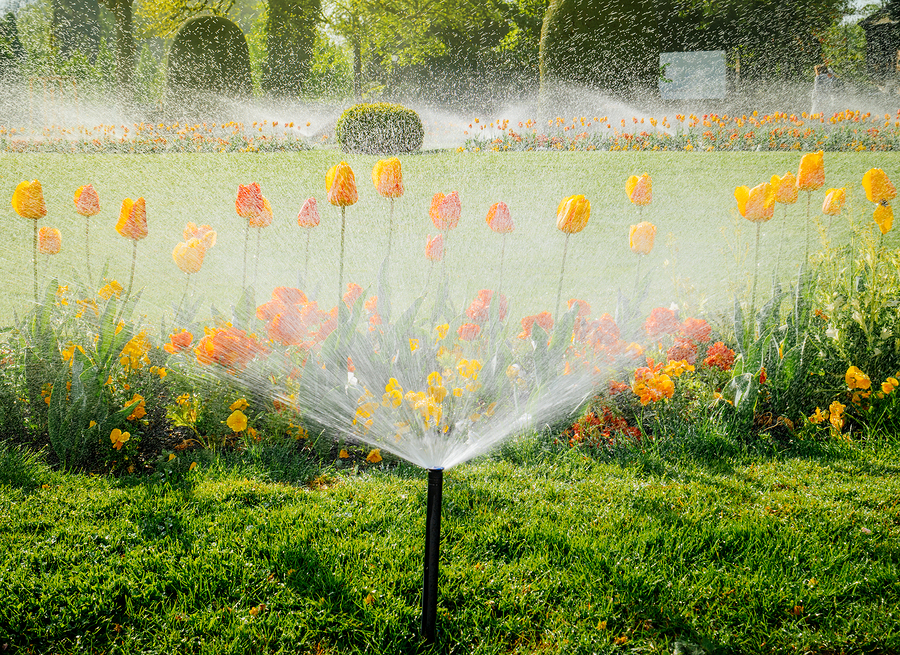Different Types of Irrigation Systems: Which is Right for You?
 The first step to creating the outdoor oasis of your dreams is working with professionals on creative landscape design, then adding appropriate hardscape elements like patios and walkways. You could even plan for attractive extras like a water feature, a fire pit, or a structure like a pergola. However, before you get too far in the planning process, you need to think about how you’re going to keep your landscaping green and lush.
The first step to creating the outdoor oasis of your dreams is working with professionals on creative landscape design, then adding appropriate hardscape elements like patios and walkways. You could even plan for attractive extras like a water feature, a fire pit, or a structure like a pergola. However, before you get too far in the planning process, you need to think about how you’re going to keep your landscaping green and lush.
Choosing the right irrigation system is an important part of maintaining your gorgeous landscaping, and believe it or not, it will require some thought if you want the best coverage and the greatest efficiency. Here are just a few types of irrigation systems to consider for your Rock Valley, Iowa yard.
Spray or Rotor Systems
These are among the most common types of residential irrigations systems. Whether you have aboveground sprinkler heads or those that pop up for use, this system works by spraying the water up over the surface of the lawn and other vegetation so that it can seep down into the soil.
On the upside, spray and rotor systems tend to deliver relatively uniform coverage when properly spread throughout your yard. While spray systems are ideal for smaller yards, rotor systems are preferable for larger expanses of turf.
There are a couple of potential drawbacks. You could lose some water to evaporation, but you can combat this by setting your system on a timer to water during ideal times of the day (like early or late). It’s also easy to overwater, especially if spray hits a structure and runs off into the soil. Proper planning and installation can help you to avoid this common issue.
Drip or Soaker Systems
These tend to be more efficient and offer the potential for less water waste than sprinkler systems, but they really aren’t suited to covering large areas of turf. Both work with hoses that are either aboveground (drip) or below (soaker), which makes them much better suited to garden areas.
Soaker systems are an excellent means of delivering water to deeper root systems, while drip lines can be modified to release water at the site of each plant in your garden, further reducing waste and ensuring every plant gets adequate irrigation. If you have both turf and garden areas, a combination of spray and drip style systems is bound to deliver the greatest advantages.
Wastewater Irrigation
As people become more aware of their impact on the planet, many are seeking ways to reduce consumption and waste. There are some options to consider, such as cisterns to collect rainwater or the installation of a gray water system that collects wastewater, or gray water, from your home and uses it to water your lawn. This water comes from acceptable sources like showers/tubs, washing machines, and sinks (as opposed to black water sources like toilets), filters it, and diverts it to water your landscaping.
While eco-friendly, such systems can be extremely expensive to install. They may also be prone to health and sanitation issues like bacteria buildup, requiring frequent maintenance to promote safety and ongoing function. Your best bet is always to speak with your Sioux Center, Iowa landscape design specialists to learn all you can and choose the irrigation system that’s right for you.